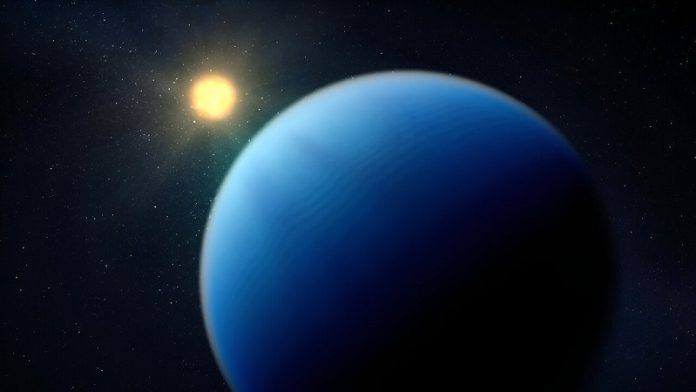
Have you ever wondered about planets beyond our solar system, known as exoplanets? They come in all sizes, from small, rocky ones like Earth to massive gas giants.
But there’s a curious puzzle in the world of astronomy: a noticeable gap in the sizes of these exoplanets, specifically between the medium-sized rocky planets (super-Earths) and the larger ones with big atmospheres (sub-Neptunes).
Scientists have been scratching their heads over why there aren’t many planets in this middle range.
A recent study, using data from NASA’s retired Kepler Space Telescope, might have just found a clue to this mystery.
The research, published in The Astronomical Journal, suggests that the missing link in this size spectrum might be due to some planets actually shrinking over time!
Here’s the deal: scientists have identified over 5,000 exoplanets, but there’s a strange shortage of planets that are 1.5 to 2 times the size of Earth. The study led by Jessie Christiansen, a research scientist at Caltech/IPAC and the science lead for the NASA Exoplanet Archive, offers a possible explanation.
It seems that some sub-Neptunes might be losing their atmospheres, which makes them shrink to the size of super-Earths, creating this odd size gap.
Now, you might wonder, how do these planets lose their atmospheres? The researchers propose two main theories. The first is called “core-powered mass loss.” This happens when radiation from the planet’s hot core pushes the atmosphere away, kind of like a balloon deflating from the inside.
The other theory is “photoevaporation,” where the planet’s atmosphere gets blown away by the intense radiation from its host star, similar to how a hairdryer melts an ice cube.
To test these ideas, Christiansen and her team used data from NASA’s K2 mission to observe two star clusters, Praesepe and Hyades, which are about 600 million to 800 million years old.
The idea was to see if the sub-Neptunes around these younger stars had lost their atmospheres or not.
If these planets still had their atmospheres, it would suggest that photoevaporation hadn’t occurred (since it’s supposed to happen in the first 100 million years of a planet’s life), leaving core-powered mass loss as the likely cause.
Their findings were fascinating. Nearly all stars in these younger clusters still had sub-Neptune planets, suggesting these planets hadn’t lost their atmospheres yet. This was different from what they saw in older stars (more than 800 million years old), where only about 25% had sub-Neptunes.
This pattern implies that the younger planets hadn’t experienced significant atmospheric loss yet, pointing to core-powered mass loss as the likely explanation for the shrinking of less massive sub-Neptunes.
However, this research is just the beginning. Christiansen’s team worked for over five years to compile the data needed for this study. But there’s still much to learn, and future studies will continue to explore and test these findings.
This ongoing research is part of NASA’s Exoplanet Exploration Program, operated by Caltech in Pasadena, and managed by NASA’s Jet Propulsion Laboratory in Southern California.
So, next time you gaze up at the stars, remember that there’s a whole universe of planets out there, and some of them are even changing size! The universe is full of mysteries, and we’re just starting to unravel them.
Follow us on Twitter for more articles about this topic.
Source: NASA.



